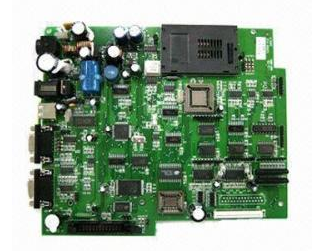There are many places to be soldered in SMT chip processing, and the most commonly used is probably solder. But what are the characteristics of solder?
According to its components, solder in SMT chip processing can be divided into tin-lead solder, silver solder, and copper solder. According to the environmental humidity used, it can be divided into high temperature solder and low temperature solder. In order to ensure the quality of soldering during patch processing, it is important to choose different solders depending on the object to be soldered. In the assembly of electronic products, tin-lead series solders, also called solders, are generally used.
Solder has the following characteristics:

1. Good conductivity: Because tin and lead solder are good conductors, its resistance is very small.
2. Strong adhesion to component leads and other wires, not easy to fall off.
3. Low melting point: it can be melted at 180 degree Celsius, and it can be welded with 25W external heating type or 20W internal heating type electric soldering iron.
4. It has certain mechanical strength: because the strength of tin-lead alloy is higher than that of pure tin and pure lead. In addition, due to the light weight of the electronic components, the strength requirements of the solder joints in the SMT patch are not very high, so the strength requirements of the solder joints can be met.
5. Good anti-corrosion performance: the welded printed circuit board can resist atmospheric corrosion without applying any protective layer, thereby reducing the process flow and reducing the cost.
Among tin-lead solders, those with a melting point below 450°C are called soft solders. Anti-oxidation solder is the solder used in automated production lines in industrial production, such as wave soldering. When this liquid solder is exposed to the atmosphere, the solder is extremely easy to oxidize, which will cause false soldering, which will affect the quality of soldering. Therefore, adding a small amount of active metal to the tin-lead solder can form a covering layer to protect the solder from further oxidation, thereby improving the soldering quality.
Because tin-lead solder is composed of two or more metals in different proportions. Therefore, the properties of tin-lead alloys will change as the ratio of tin-lead changes. Due to different manufacturers, the configuration ratio of tin-lead solder is very different. In order to make the solder ratio meet the needs of soldering, it is important to select the appropriate ratio of SMT soldering solder.
The commonly used solder matching ratios are as follows:
1. Tin 60%, lead 40%, melting point 182 degree Celsius;
2. Tin 50%, lead 32%, cadmium 18%, melting point 150 degree Celsius;
3. Tin 55%, lead 42%, bismuth 23%, melting point 150 degree Celsius.
There are several shapes of solder, such as wafer, ribbon, ball, and solder wire. The commonly used solder wire contains solid flux rosin inside. There are many types of solder wire diameter, commonly used 4mm, 3mm, 2mm, 1.5mm, etc.
The above is about the characteristics of SMT patch soldering solder.